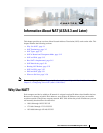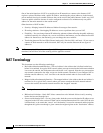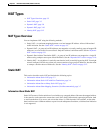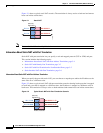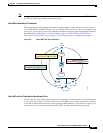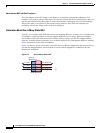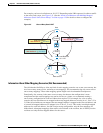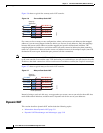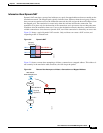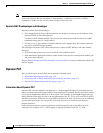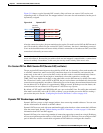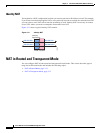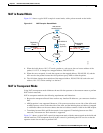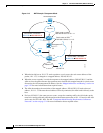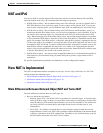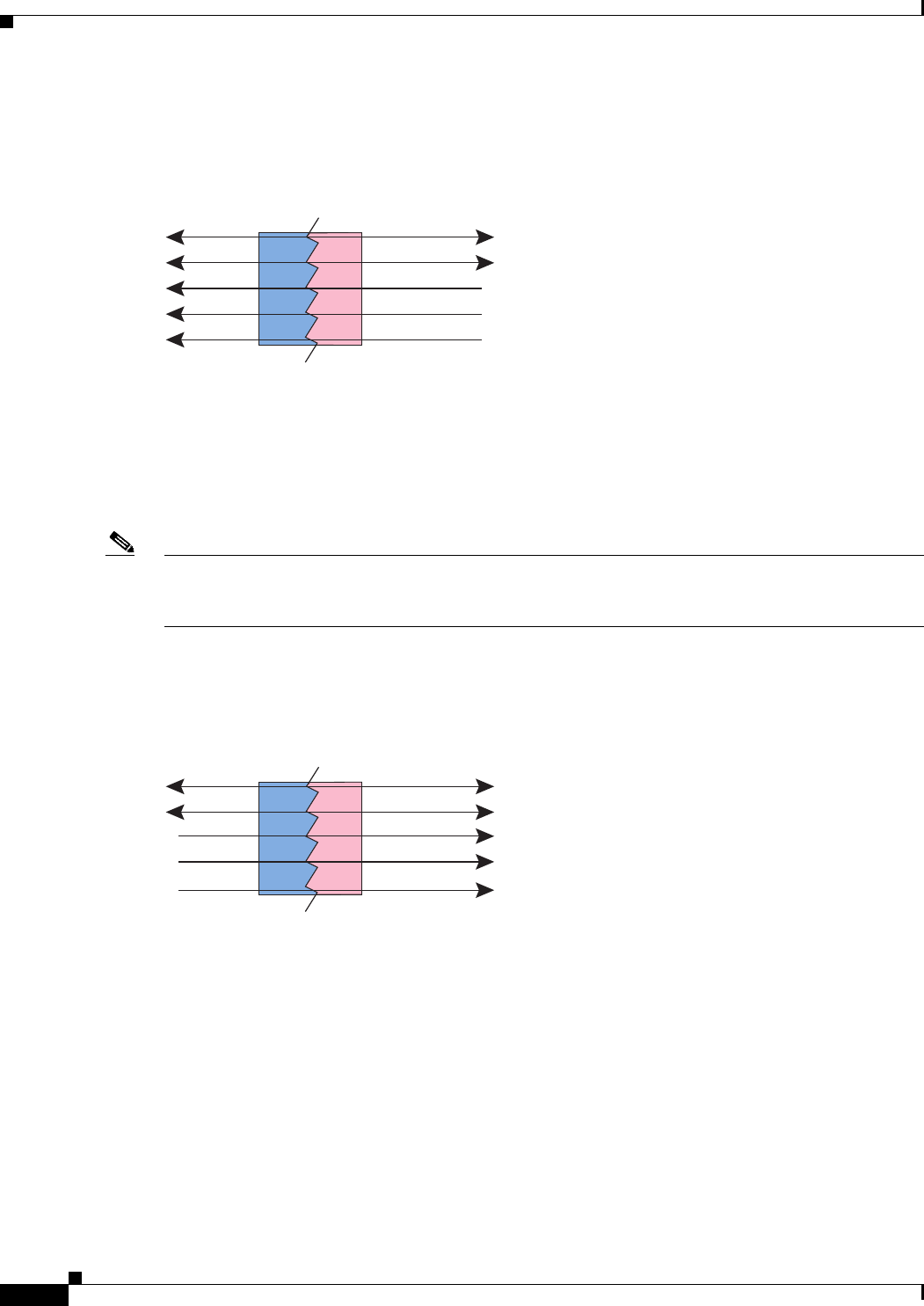
3-8
Cisco ASA Series Firewall ASDM Configuration Guide
Chapter 3 Information About NAT (ASA 8.3 and Later)
NAT Types
Figure 3-6 shows a typical few-to-many static NAT scenario.
Figure 3-6 Few-to-Many Static NAT
For a many-to-few or many-to-one configuration, where you have more real addresses than mapped
addresses, you run out of mapped addresses before you run out of real addresses. Only the mappings
between the lowest real IP addresses and the mapped pool result in bidirectional initiation. The
remaining higher real addresses can initiate traffic, but traffic cannot be initiated to them (returning
traffic for a connection is directed to the correct real address because of the unique 5-tuple (source IP,
destination IP, source port, destination port, protocol) for the connection).
Note Many-to-few or many-to-one NAT is not PAT. If two real hosts use the same source port number and go
to the same outside server and the same TCP destination port, and both hosts are translated to the same
IP address, then both connections will be reset because of an address conflict (the 5-tuple is not unique).
Figure 3-7 shows a typical many-to-few static NAT scenario.
Figure 3-7 Many-to-Few Static NAT
Instead of using a static rule this way, we suggest that you create a one-to-one rule for the traffic that
needs bidirectional initiation, and then create a dynamic rule for the rest of your addresses.
Dynamic NAT
This section describes dynamic NAT and includes the following topics:
• Information About Dynamic NAT, page 3-9
• Dynamic NAT Disadvantages and Advantages, page 3-10
10.1.2.27 209.165.201.3
Inside Outside
10.1.2.28 209.165.201.4
10.1.2.27 209.165.201.5
10.1.2.28 209.165.201.6
10.1.2.27 209.165.201.7
Security
Appliance
248769
10.1.2.27 209.165.201.3
Inside Outside
10.1.2.28 209.165.201.4
10.1.2.29
209.165.201.3
10.1.2.30
209.165.201.4
10.1.2.31
209.165.201.3
Security
Appliance
248770




